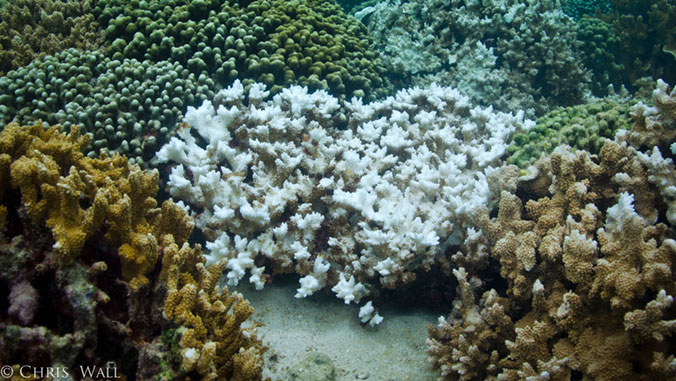
Climate change is threatening coral reefs worldwide, primarily through increased temperature stress, which causes coral bleaching. The Paul G. Allen Family Foundation granted $7.2 million to support researchers working to help coral reefs survive the impacts of climate change. Of those selected, a University of Hawaiʻi at Mānoa team was awarded $950,000 for a project which aims to speed up the natural evolution of heat resilient corals.
The Coral Resilience Lab (continuing the legacy of Ruth Gates) at UH Mānoa’s Hawaiʻi Institute of Marine Biology (HIMB) are using selective breeding in corals to speed up natural evolutionary processes and better understand if heat tolerant coral colonies produce offspring better suited to dealing with climate change.
Researchers will identify thermally tolerant corals in the field, breed them in the lab and expose them to anticipated future climate conditions to see how they cope with the increasingly stressful environments they will face. The most resilient corals will then be out-planted and the results of this selective breeding process will be monitored in the field.
Bleached corals lose the algal symbionts living within their cells and can die if they do not recover quickly enough. This process is becoming increasingly frequent and severe, challenging ecosystems everywhere to keep up.
“Nature has lots of ways to deal with change, but we don’t know if they are able to keep pace with climate stress, so we are exploring how the basics of natural processes like selective breeding can be used to support the long-term survival of reefs,” said Crawford Drury, principal investigator of the project.
Finding solutions, pushing boundaries
The award from the Paul G. Allen Family Foundation is a big step forward for basic and applied science that informs coral conservation, protects Hawaiʻi’s reefs and generates information that is applicable everywhere. This project follows on the proof of concept known as “Coral Assisted Evolution,” which transformed the idea of accelerating natural processes to a mainstream scientific concept. Importantly, the project is focused on finding solutions and pushing boundaries.
“This work is important for HIMB and Hawaiʻi because it supports local efforts to understand the causes and consequences of climate change on natural resources and the services they provide,” added Drury. “We are hopeful that we will continue to develop tools that inform restoration, conservation and management action throughout the state and the Pacific that support coral reefs.”
This project is leveraged by funding from the NOAA Ruth Gates Coral Restoration Innovation Grant and the National Fish and Wildlife Foundation.
This research is an example of UH Mānoa’s goal of Excellence in Research: Advancing the Research and Creative Work Enterprise (PDF) and UH Mānoa’s goal of Building a Sustainable and Resilient Campus Environment: Within the Global Sustainability and Climate Resilience Movement (PDF), two of four goals identified in the 2015–25 Strategic Plan (PDF), updated in December 2020.
More on Paul G. Allen Family Foundation
The Paul G. Allen Family Foundation’s suite of grants will support the next phase of groundbreaking research to identify naturally heat tolerant corals, accelerate corals’ natural evolution processes, improve restoration methods and ultimately slow the decline of coral reefs. Coral reefs sustain more than a quarter of all marine life and drive $2.7 trillion dollars in ecosystem services each year. Climate change, however, is rapidly accelerating their path toward extinction, threatening the safety, livelihood and food security of almost one billion people across the globe.
The foundation’s $7.2 million in support will allow grantees to build off their successful initial research phases and enter into phase two, which focuses on turning these innovative ideas into scalable, sustainable solutions for coral reefs. This new suite of research grants has been designed with a three-year timeline and is focused on applied solutions that will have tangible impacts by 2024.

